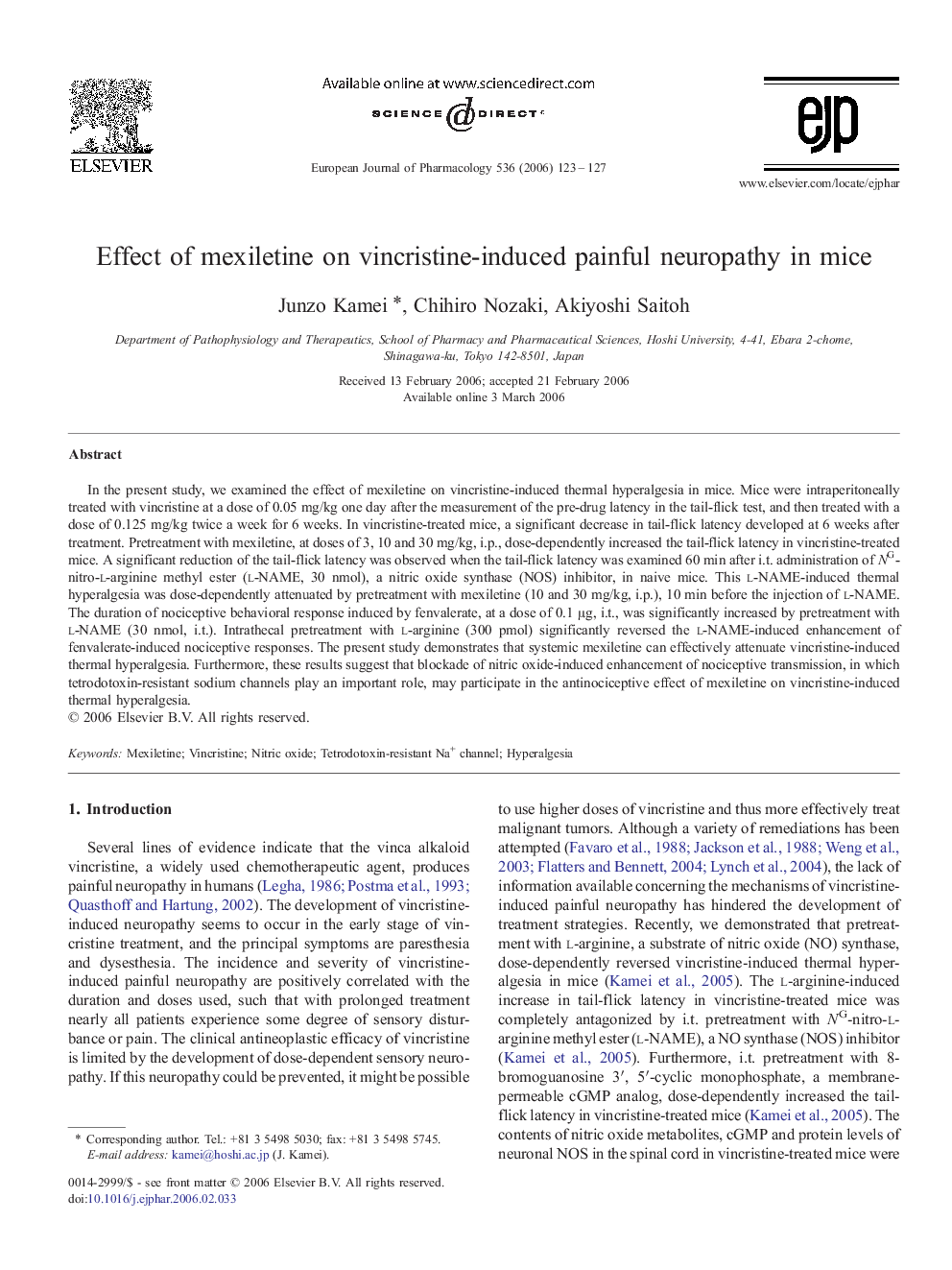| Article ID | Journal | Published Year | Pages | File Type |
|---|---|---|---|---|
| 2537171 | European Journal of Pharmacology | 2006 | 5 Pages |
In the present study, we examined the effect of mexiletine on vincristine-induced thermal hyperalgesia in mice. Mice were intraperitoneally treated with vincristine at a dose of 0.05 mg/kg one day after the measurement of the pre-drug latency in the tail-flick test, and then treated with a dose of 0.125 mg/kg twice a week for 6 weeks. In vincristine-treated mice, a significant decrease in tail-flick latency developed at 6 weeks after treatment. Pretreatment with mexiletine, at doses of 3, 10 and 30 mg/kg, i.p., dose-dependently increased the tail-flick latency in vincristine-treated mice. A significant reduction of the tail-flick latency was observed when the tail-flick latency was examined 60 min after i.t. administration of NG-nitro-l-arginine methyl ester (l-NAME, 30 nmol), a nitric oxide synthase (NOS) inhibitor, in naive mice. This l-NAME-induced thermal hyperalgesia was dose-dependently attenuated by pretreatment with mexiletine (10 and 30 mg/kg, i.p.), 10 min before the injection of l-NAME. The duration of nociceptive behavioral response induced by fenvalerate, at a dose of 0.1 μg, i.t., was significantly increased by pretreatment with l-NAME (30 nmol, i.t.). Intrathecal pretreatment with l-arginine (300 pmol) significantly reversed the l-NAME-induced enhancement of fenvalerate-induced nociceptive responses. The present study demonstrates that systemic mexiletine can effectively attenuate vincristine-induced thermal hyperalgesia. Furthermore, these results suggest that blockade of nitric oxide-induced enhancement of nociceptive transmission, in which tetrodotoxin-resistant sodium channels play an important role, may participate in the antinociceptive effect of mexiletine on vincristine-induced thermal hyperalgesia.
